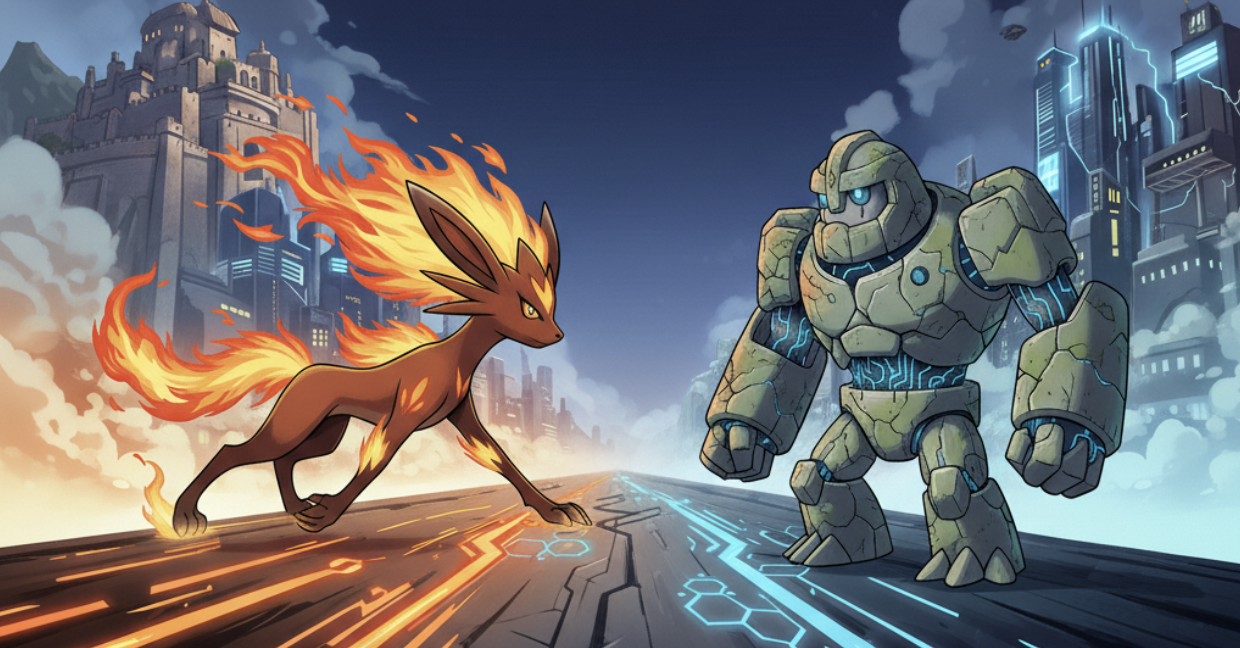In a recent conversation, Ritendra Datta, VP of AI at Eightfold, gave a fresh perspective on AI development. With his extensive background leading AI teams of all sizes—from small pods to over 200 engineers and researchers—across Google, Facebook & Databricks, Ritendra brings a unique perspective on what works and what doesn’t in building AI systems at scale.
This is a refreshingly take: all of AI development can be seen through two lenses—Fast AI and Slow AI.
The interesting part? Each path demands a completely different mindset, and very few teams can do both well.
Fast AI vs Slow AI
Fast AI = Rapid product development and go-to-market speed. Building MVPs, launching features, getting to market first, create differentiation and positioning. Testing what users actually want and pivoting quickly. It’s like a sprint - quick bursts of energy to win the race. Think weeks and sprints.
Slow AI = Systems built with depth, metrics that capture real performance, data pipelines that ensure quality, models that hold up against edge cases, and governance that keeps everything reliable. It’s like climbing a mountain - steady, methodical progress toward a peak that takes time to reach. Think months and years.
Here’s the kicker: The things that make you great at Fast AI can actually hurt your Slow AI work.
Different Goals, Different Metrics
Fast AI (1-3 months):
- Are we first to market with this feature?
- How quickly can we validate product-market fit?
- Can we ship an MVP this sprint?
- Are users adopting our new AI features?
- Does the feature create a clear “wow” moment for users?
Slow AI (3-12 months):
- Can the system adapt and scale to new use cases?
- Are we putting the right safeguards in place to ensure safety and trust?
- How to handle edge cases and remain reliable over time?
- Are we building on strong, future-proof foundations?
- Improve the system using a feedback loop.
Some teams focus on Fast AI metrics. They race to launch, ship MVPs quickly, and capture market share. Others focus on Slow AI. They build rock-solid systems and prioritize long-term stability over speed.
Different Muscles
Fast AI people: Jump into building products. Love getting to market fast. Think about user adoption and competitive advantage. Great at MVPs and product iteration.
Slow AI people: Ask deep questions about architecture. Worry about edge cases. Think about what happens when things scale.
Neither is better. But you need both types of people on your team.
The Winning Formula
The best AI companies don’t choose between fast and slow. They do both:
- Focused teams for both that work differently but talk to each other
- Different timelines - some projects for quick wins, others for long-term building
- Two sets of metrics - track both speed and stability
- Cultural flexibility - know when to move fast vs when to build right
Why This Matters
Your competition probably excels at one approach and sucks at the other.
Startups are usually great at Fast AI but terrible at Slow AI. They get to market quickly and capture users but their systems fall apart when they need to scale or compete long-term.
Big companies nail Slow AI but are painfully slow at Fast AI. They build solid systems but miss every opportunity to actually use them.
The winners? They master both muscles.
What about your team - are you better at Fast AI or Slow AI?
